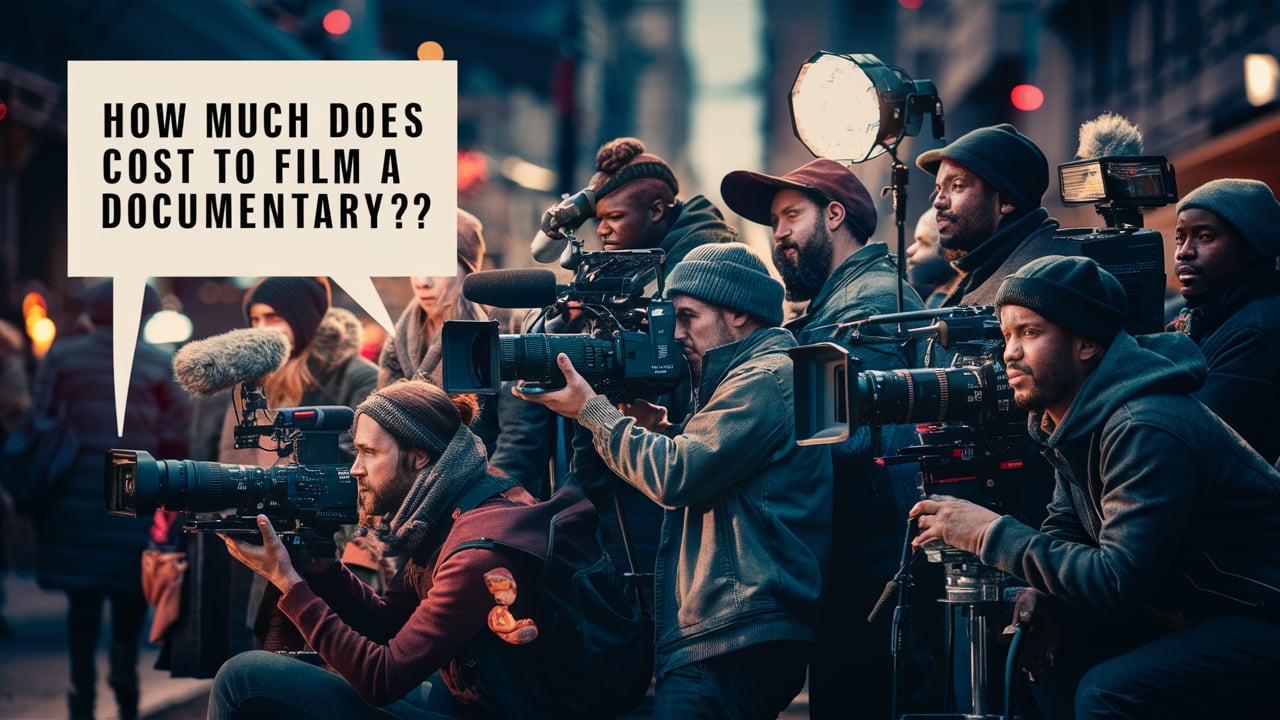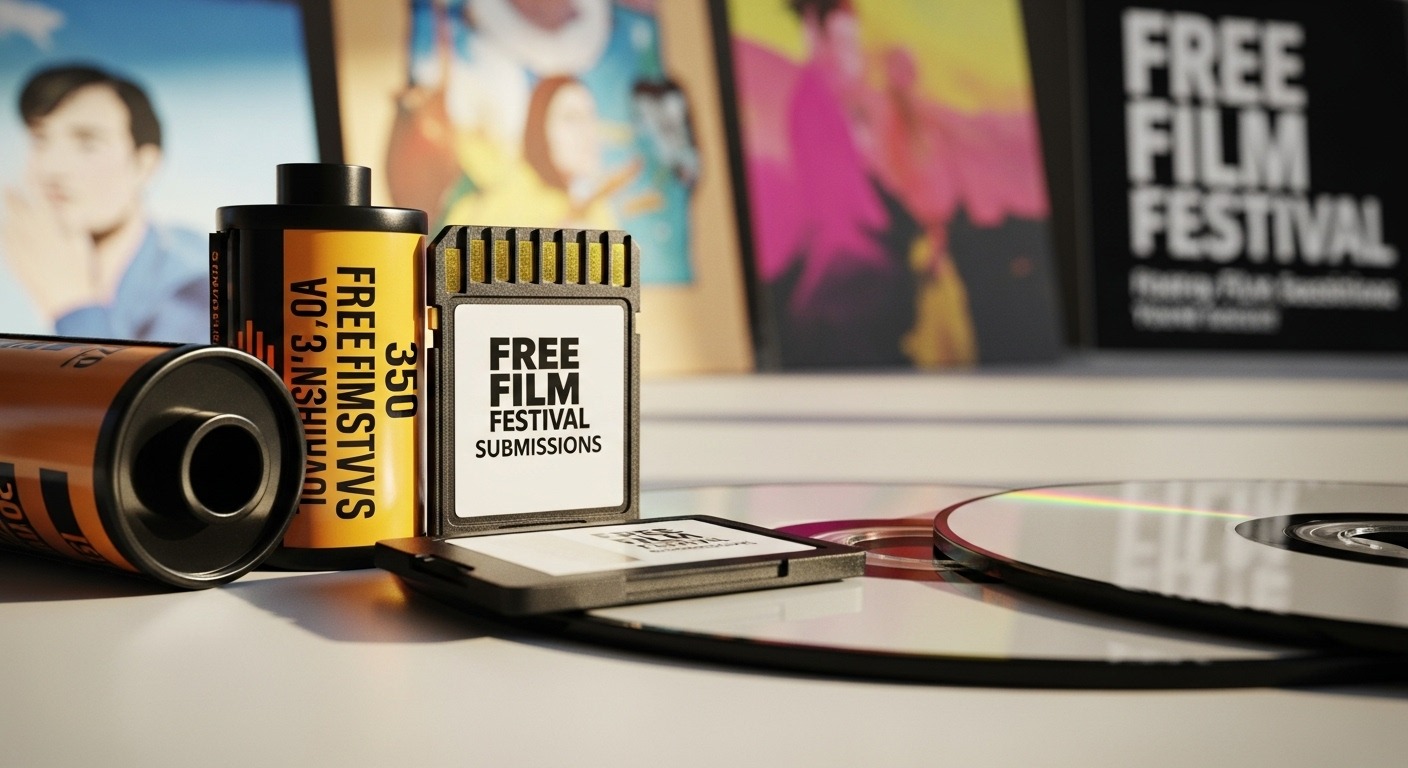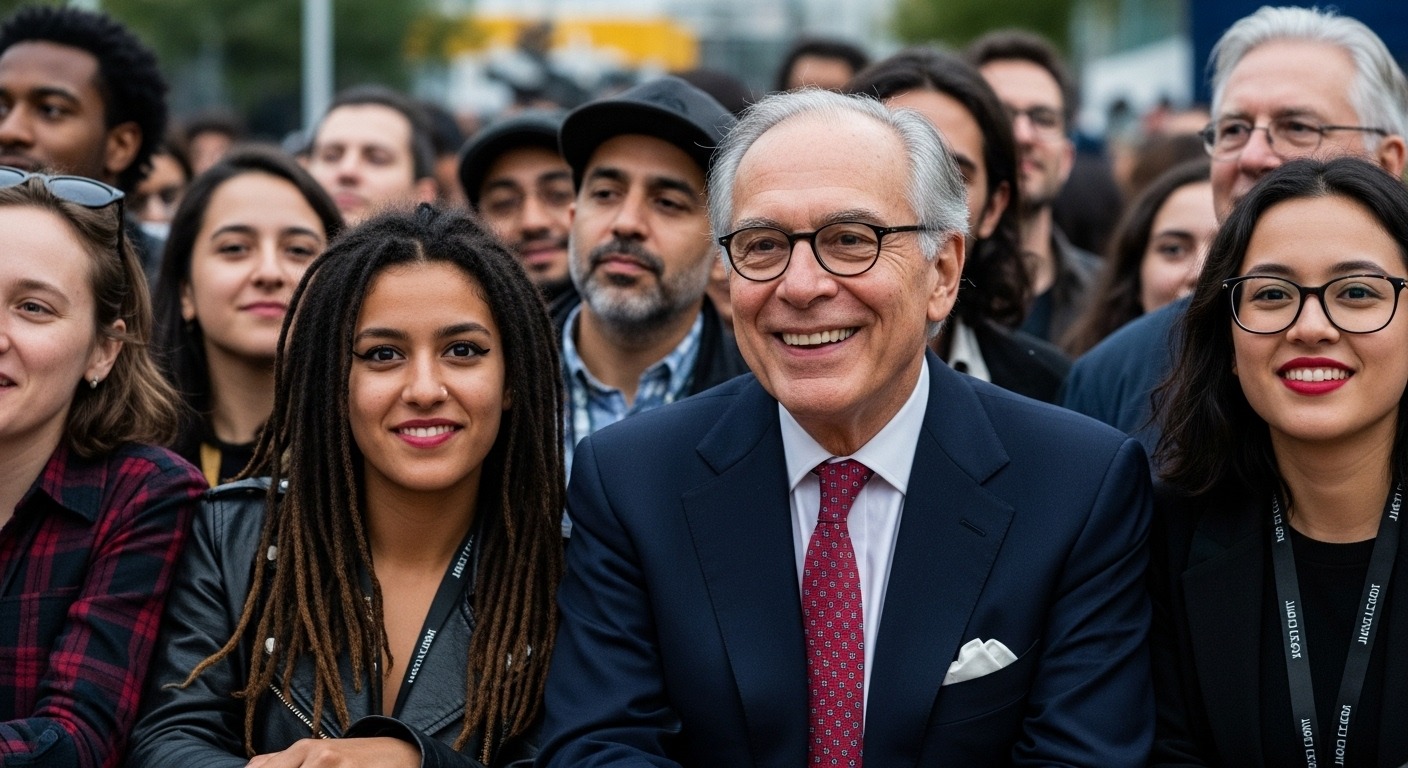Calculated Cost to Film a Documentary.
The cost to film a documentary can vary greatly depending on several factors, including the scope of the project, the location(s) of filming, the length of the documentary, the talent involved, and the production values desired. Here are some general cost ranges and considerations:
Low-Budget Documentaries.
- Cost: $10,000 to $50,000
- Characteristics: Often feature a small crew, minimal equipment, limited travel, and unpaid or minimally paid participants. These documentaries may rely heavily on existing footage and interviews.
Mid-Budget Documentaries.
- Cost: $50,000 to $500,000
- Characteristics: Typically have a larger crew, more advanced equipment, professional editing, and potentially some travel. There may be payments for interviewees, archival footage, and music rights.
High-Budget Documentaries.
- Cost: $500,000 to $2,000,000 or more
- Characteristics: Involve extensive travel, a large professional crew, high-quality production values, well-known talent, and extensive post-production work. These documentaries often include original music scores, special effects, and significant marketing budgets.
Factors Influencing Cost.
- Crew: The number of people working on the documentary, including directors, producers, camera operators, sound technicians, and editors.
- Equipment: Cameras, lighting, sound recording equipment, and other technical gear.
- Travel: Costs associated with filming on location, including transportation, lodging, and permits.
- Post-Production: Editing, sound design, color correction, and special effects.
- Talent: Payments to interview subjects, narrators, or other on-screen talent.
- Licensing: Fees for archival footage, photographs, music, and other copyrighted material.
- Marketing and Distribution: Costs for promoting and distributing the documentary to audiences.
Funding Sources.
Documentary filmmakers often seek funding from various sources, such as:
- Grants: From film foundations, arts councils, and other organizations that support documentary filmmaking.
- Crowdfunding: Campaigns on platforms like Kickstarter or Indiegogo.
- Investors: Private investors or production companies.
- Broadcasters and Streaming Services: Pre-selling the documentary to television networks or streaming platforms.
- Film Festivals: Some festivals offer cash prizes or grants for documentary projects.
The cost of producing a documentary can be managed through careful planning, seeking multiple funding sources, and prioritizing essential elements of the production.

Making a documentary film is an exciting and creative process, but it can be expensive. If you are interested in making a documentary, one of the first questions that comes to mind is “How much does it cost to film a documentary?” In this article, we will provide insight into the costs associated with producing a documentary and offer helpful tips on how to manage your budget.
Documentary Filmmaking.
Documentary filmmaking is a unique art form that combines the power of storytelling with visuals and sound. It allows individuals to explore untold stories, uncover hidden truths and share their unique perspectives on life. But one of the biggest questions aspiring documentary filmmakers have is: how much does it cost to film a documentary?
The cost of making a documentary can vary greatly depending on several factors including the type of equipment being used, the number of crew members needed, travel expenses, legal fees and editing costs. It’s important to take all these things into consideration when budgeting for your project.
Additionally, it’s beneficial to look for ways to save money such as borrowing or renting equipment rather than buying new items. Depending on your resources and goals, you should be able to find an effective budget that works for you.
Also read – characteristics of a documentary film.
Cost To Film a Documentary.
Budgeting: The Basics.
Budgeting is one of the most important aspects of successfully producing a documentary film. It involves careful planning and consideration, as well as taking into account the various costs associated with filming a documentary. Before even getting started, filmmakers should consider how much it will cost to make their desired feature.
This includes both pre-production costs such as equipment rentals, crew salaries and location fees, as well as post-production costs such as editing software and sound mixing. Depending on the exact nature of the project, it could range anywhere from hundreds to thousands or even millions of dollars.
In addition to these upfront production costs, filmmakers should also factor in how much they will need to spend on other expenses related to making a documentary film such as marketing materials and festival submissions.
Equipment Costs.
Equipment costs are an important factor to consider when filming a documentary. It’s important to budget for necessary items needed in order to properly produce the documentary with quality. The cost of filmmaking equipment can vary greatly depending on what is needed, however there are some general costs that should be expected if you plan on making a successful documentary.

A basic camera setup such as a DSLR or mirrorless camera, lenses and audio recording equipment could cost anywhere between $2-3000 USD depending on the type and model of these items.
Additionally, tripods, replacement batteries and other miscellaneous gear that may be necessary will add up quickly and can easily push the total up to $5000 USD or more. Specialized cameras like those used in drones, underwater recording or even virtual reality can be significantly higher in price and may not always be necessary for every production.
Also read – types of documentary films.
Production Costs.
The cost of producing a documentary can vary greatly depending on the length, complexity, and scope of the production. Filming a feature-length documentary can be one of the most expensive filmmaking endeavors that an independent filmmaker or production team can undertake.
The total costs for shooting a full-length documentary—including pre-production expenses such as research, crew costs, equipment rentals, travel expenses, and post-tproduction—can exceed tens of thousands of dollars.
Even with careful budgeting and planning, it’s not unusual for filmmakers to spend up to $50K to $100K or more on their project. This number is often much higher in competitive markets like New York City or Los Angeles where crew rates are higher than other areas.
Post-Production Costs.
Post-production costs are a critical factor to consider when making a documentary. The amount of money that goes into post production activities such as editing, sound design and visual effects can vary greatly depending on the type of project.
A low-budget documentary might only require minimal post production work while a feature film needs much more attention in order to achieve its desired effect. As such, it is important to have an understanding of how much does it cost to film a documentary before committing time and resources.
Generally speaking, there are several things that go into determining the total cost for post-production services. The main components include the number of hours that will be required for editing and other tasks, along with any additional equipment or software that may need to be purchased or rented out.
Also read – How to get into documentary filmmaking?
Other Considerations.
When considering how much it costs to film a documentary, there is no simple answer. Depending on the scale of the project, it can range from a few hundred dollars to several million. Most documentaries are produced with relatively limited budgets and resources, allowing filmmakers to keep their production costs low.

However, for larger projects where more equipment and personnel is required, the cost can skyrocket. Filmmakers should also consider pre-production and post-production expenses such as editing software, sound mixing services, legal fees for licensing documents or music rights, marketing campaigns etc.
Other important factors that need to be taken into account include travel costs if filming in remote locations; food and housing arrangements for cast or crew; insurance premiums; location rental or set construction fees; wardrobe pieces; props; equipment rental fees etc.
Factors That Influence Documentary Production Costs.
Equipment Expenses.
The camera, lenses, lighting, audio recording equipment, computer editing systems, and media storage can cost anywhere from a few thousand to hundreds of thousands of dollars to purchase or rent, depending on the quality level needed for the project. High-end gear is more expensive but can provide a more cinematic look.
Crew Costs.
Hiring an experienced documentary crew like a cinematographer, sound recordist, producer, production manager, assistant editors, etc. can range from a few hundred to thousands of dollars per day depending on experience level and project scale. Crew size and rates will impact overall production costs.
Travel Expenses.
If filming takes place in multiple locations, especially internationally, the costs of transportation, hotels, equipment shipping, insurance, visas, etc. can add up quickly. Mileage and car rentals for domestic shoots should also be budgeted.
Licensing Fees.
Securing permission to use copyrighted materials like music, archival footage or images can cost hundreds or thousands of dollars depending on the rights holders. Fair use standards may allow some uncompensated usage.
Post-Production Costs.
Editing picture and sound, color correction, graphics, titles, animation, stock media, music scoring and sound mixing all require specialized personnel and equipment. The longer the runtime, the greater the post costs.
Legal Support.
Lawyers may be needed to review contracts, provide guidance on fair use, negotiate life rights agreements, etc. which can cost thousands. E&O insurance is also recommended.
Marketing and Distribution.
Submitting to film festivals, producing marketing materials, website hosting, digital distribution platforms and costs associated with broadcast or theatrical distribution must be considered.
Cost to Produce a High-Quality Documentary.
For a high production value documentary shot in cinematic 4K and 5.1 surround sound, with an experienced crew, expensive camera gear, complex editing and grading, original music, and robust distribution strategy, the costs can easily exceed hundreds of thousands to several million dollars.
However, that is on the very high end. More modest documentaries can be produced to a reasonably high quality for $20,000 to $60,000 range if budgets are well-managed.
The key factors that affect costs are overall runtime, locations, crew size, equipment needs, rights and clearances, editing complexity, etc. But an experienced producer can deliver impressive production value even on a tighter budget.
Average Cost Per Minute of a Documentary.
Industry estimates peg the average cost per finished minute of a professionally produced documentary generally between $1,500 to $4,500. However, that can vary widely based on the complexity of the production and post-production.

A minimalist vérité style documentary without extensive editing or licensing needs may cost closer to $500 – $1,500 per minute. At the other end, a complex VFX heavy documentary shot on 35mm film across multiple continents could exceed $10,000 per minute. But for most single-camera productions with a small crew, $2,000 to $3,000 per finished minute is a reasonable budget estimate.
Cost to Produce a 30-Minute Documentary.
For a standard 30-minute documentary suitable for broadcast or streaming distribution targeted to a niche audience rather than a mass market, a realistic budget would be $40,000 to $90,000. At $2,500 per finished minute, a 30-minute runtime would cost approximately $75,000 including pre-production, shooting, editing, graphics, music, color correction, mastering and deliverables.
This assumes a single shooter, basic equipment, limited travel, and straightforward rights clearances. Higher production values or complex distribution plans could push the budget to $90,000 or more. But an experienced producer could deliver a quality 30-minute documentary for around $40,000 by carefully managing expenses and team size.
Cost to Produce a 60-Minute Documentary.
For a 60-minute broadcast or streaming documentary, the budget would scale up accordingly. At $3,000 per finished minute, a 60-minute documentary would cost approximately $180,000. With a larger crew, more locations, expanded distribution, and higher production values, costs for a 60-minute documentary could easily rise to $250,000 to $500,000.
But it’s also possible to produce a compelling 60-minute documentary for $80,000 to $150,000 with the right cost-saving measures and efficient processes. The longer the runtime, the greater the costs involved across all production and post-production elements.
Most Expensive Aspects of Documentary Production.
The major cost drivers for higher-end documentaries include shooting on film vs. digital, travel to foreign locations, licensing archival content, music rights, hiring high-profile talent, renting state-of-the-art camera/lighting gear, extensive VFX and animation, exhaustive legal vetting, and theatrical distribution strategies.
Paying for an experienced Editor, Colorist and Audio Mixer to polish the film in post-production also requires a significant allocation of the overall budget. Producers looking to control costs focus on minimizing crew size, utilizing fair use content, trying to secure sponsorship funding, shooting digital, and scaling distribution plans based on resources available.
Cost to Hire a Documentary Film Crew.
For an independent documentary, the core crew generally includes a Producer, Director, Director of Photography (DP), Audio Recordist, and Assistant Camera. Depending on the scale of the production, rates can range from:
- Producer: $2,000 – $5,000 per week
- Director: $1,000 – $3,000 per week
- DP: $750 – $2,500 day rate
- Audio: $650 – $1,000 day rate
- Assistant Camera: $250 – $500 day rate
Larger productions may also require Production Managers, Production Assistants, data wranglers, grips, gaffers, drone operators, etc. at additional costs. It’s common to pay crew members fixed day or weekly rates rather than hourly over longer documentary shoots.

Equipment Rental Costs for Documentaries.
For professional quality results, documentary crews generally need to rent gear like:
- Camera Packages: $500 – $1,500 per day
- Lenses: $50 – $300 per day each
- Tripods, Sliders: $30 – $100 per day
- Lighting/Grip: $150 – $500 per day
- Audio Equipment: $150 – $300 per day
- Drone Packages: $250 – $500 per day
Total equipment rental budgets for a multi-week shoot often end up in the $10,000 to $30,000 range including accessories, media, insurance and transportation. Filmmakers can save money by owning their own basic gear and only renting specialty items needed.
Typical Documentary Crew Head Rates.
While rates can vary based on experience and demand, typical daily or weekly rates for heads of departments on documentary crews are:
- Director: $800 – $2,500 day
- Producer: $750 – $2,000 day
- DP: $600 – $1,500 day
- Camera Operator: $400-800 day
- Assistant Camera: $250-500 day
- Audio Recordist: $550 – $900 day
- Gaffer: $400 – $650 day
- Sound Mixer: $850 – $1,200 day
- Colorist: $600 – $1,000 day
- Editor: $450 – $800 day
Negotiating fixed weekly rates can offer savings on longer projects. Name talent will command much higher rates.
Cost to Hire Documentary Editors.
Working with an experienced documentary editor is key, and rates vary based on credentials and demand:
- Entry-level: $300 – $500 per day
- Intermediate: $450 – $750 per day
- Top-tier: $650 – $1,000+ per day
Editors may charge creative fees, weekly rates, or flat project rates. Budget $15,000 to $30,000 for editing costs of a feature doc. Short form pieces under 30 minutes can be edited for $3,000 to $8,000 total.
Music Costs for Documentaries.
- Commission original score: $1,000-5,000 per finished minute
- License popular songs: $3,000 – $20,000 per song
- Buy stock music/SFX: $50 – $300 per track
Allow at least $5,000 to $10,000 for stock music and $15,000 to $50,000+ if licensing recognizable songs. Original composed scores are preferred for theatrical docs.
Other Key Documentary Costs.
- Narrator talent: $5,000 – $15,000 flat fee
- Archival licensing: $300 – $1,000 per clip
- Animated maps/graphics: $300 – $1,000 per minute
- Color correction: $1,500 – $3,000 per finished hour
- Transcription services: $1.50 – $3.00 per audio minute
- Insurance: $5,000 – $15,000+ depending on production
Controlling these ancillary costs while maintaining quality is an art and science that veteran documentary producers and DPs specialize in.

Hidden Costs of Documentary Productions.
From insurance to transcoding to rights, hidden documentary costs quickly add up:
- Insurance: E&O, equipment, liability coverage
- Transcripts: Verbatim text of interviews
- Clearances: Archival clips, trademarks, music
- Local Fixers: Help arranging overseas shoots
- Hard Drives: Media storage/backup
- Transcoding: Converting formats for deliverables
- Festival Fees: Submission costs can add up
- Distribution Platform Fees
- Office Expenses: Supplies, printing, shipping
- Software Licenses
- Website Hosting
A detailed line item budget projections and 10-15% contingency funds helps cover unexpected overages.
Strategies for Writing Realistic Documentary Budgets.
Creating an accurate documentary budget requires:
- Breaking down expenses by pre-production, production, post, marketing and distribution phases
- Researching realistic local crew rates if hiring locally
- Getting quotes from vendors for equipment rentals, stock media, and post services
- Factor insurance, mileage, meals, travel, shipping and contingencies
- Build in buffers for unknowns like weather delays or added shoot days
- Be transparent about your existing resources – camera gear owned, editing capability, etc.
- Have an experienced documentary producer review for accuracy
- Submit to doc grants/sponsors to secure additional funding
- Reassess script/storyboards to align with locked budget
- Maintain diligent records and projections as actual costs start being incurred
There are always curveballs, but anticipating expenses in granular detail avoids major cost overruns.
Questions to Ask When Hiring a Documentary Director.
Critical questions when hiring a documentary director:
- What is your previous documentary experience and credits?
- What is your creative vision for the project?
- What is your estimated fee and terms?
- What resources or team do you already have available?
- How do you approach working with subjects?
- How collaborative are you with producers and funders?
- What is your interview style and technique?
- Do you have experience with the technical aspects of filming and audio?
- How involved will you be with editing?
- How readily can you travel for shoots?
- What film festivals have you previously participated in?
- What is your distribution philosophy?
- How open are you to feedback from collaborators?
- What production challenges do you anticipate?
- What differentiated access do you bring to this topic?
- What is your post-production workflow?
- How do you prefer to structure your deals?
Vetting directorial vision, experience, and team dynamics is crucial before committing.
Factoring Archival Media Use Into Documentary Budgets.
Licensing archival media can be a major documentary expense:
- Featured archival clips – $500 – $5,000 per clip
- Background B-roll footage – $200 – $1,000 per clip
- Historical photographs – $250 – $1,500 each
- Audio clips and music – $300 – $2,500 per track
Fair use doctrine allows unlicensed use of copyrighted media for commentary/criticism/reporting. To qualify as fair use:
- Use only short portions of the work
- Edit clips to illustrate a specific point
- Credit the rights holders appropriately
- Don’t undermine the commercial value of the work
Seeking legal guidance is wise when relying on fair use rationales. Budget at least $3,000 – $10,000 for an intellectual property attorney to review media usage.
Always prioritize licensing from authoritative sources like news networks, stock agencies, and specialty archives. Securing publisher permission in writing is mandatory.
Budgeting for a Television Documentary Series.
For a multi-part television docuseries, additional costs add up quickly:
- More shooting days across multiple episodes
- Individual segment recaps and show packaging
- TV technical delivery specifications
- Increased crew sizes
- Additional archival licensing
- Prominent on-screen talent may command bigger fees
- More edit time for each episode’s post-production
- Extra marketing materials and assets per episode
Typical per-episode costs for a high-end docuseries range from $250,000 – $500,000. Budgeting $400,000 per hour-long episode is reasonable for a quality production.
The large episode count also extends schedules. Plan for 9-12 months to produce an entire season, depending on episode count and runtimes.
Questions to Ask When Hiring a Documentary Producer.
Essential questions when hiring a producer:
- What documentaries have you previously produced?
- How do you approach developing stories and fundraising?
- What resources or team do you already have available?
- How many projects do you juggle simultaneously?
- How would you describe your production management style?
- What challenges do you foresee for this project?
- How do you identify and secure distribution?
- What is your level of experience with marketing and PR?
- How strong are your budgeting skills?
- How involved will you be during shooting?
- How versed are you in post-production?
- What deliverables standard do you adhere to?
- What insurance and legal vetting is part of your process?
- How transparent will budget tracking and reporting be?
- What are your fees and payment structure?
- Can you share producer reels and client references?
Solid producers are essential partners in shepherding a doc successfully from concept to distribution.
Negotiating Music Rights for Documentaries.
Securing song rights is key during documentary post-production:
- Research who controls publishing and recording rights.
- Submit song use requests well in advance of any deadlines.
- Be ready to provide detailed context on how songs are featured.
- Have a firm budget limit prepared before requesting quotes.
- Remember publishers can refuse any request for any reason.
- Consider alternate songs if costs become prohibitive.
- Master use licenses grant the broadest rights.
- Synchronization licenses allow song use paired to visuals.
- Libraries offer pre-cleared stock music at lower costs.
- Sites like Soundstripe have affordable, royalty-free scores.
- Original composed scores avert all licensing hurdles.
Navigating music rights requires patience and creative flexibility, but adds invaluable production value.
Distribution Deliverable Standards for Documentaries.
Distribution platforms have precise specs:
- Digital File Types: ProRes, H.264
- Resolutions: 2K, 4K, HD
- Frame Rates: 23.976, 29.97
- Color Space: REC709, DCI-P3
- Audio Channels: Stereo, 5.1 Surround
- Closed Captions: SRT files, burned-in
- Watermarking, slates, metadata etc.
Researching requirements for each platform is essential. Partnering with experienced post-production personnel accustomed to delivering for multiple formats saves headaches.
Building in the costs of meeting distribution specifications into the budget during development helps avoid unexpected output expenses after production wraps.
Conclusion: Balancing Cost and Quality.
When it comes to balancing cost and quality, the question of how much does it cost to film a documentary can be difficult to answer. Every project is unique and requires different tools, resources and personnel for successful completion.

Ultimately, the cost of producing a documentary largely depends on the complexity of the story, location(s), equipment needed, crew size and additional factors such as editing hours.
If you’re producing a low-budget documentary with minimal requirements then filming could range from $2000 to $15000 depending on your needs.
On the other hand, if you’re creating a feature-length doc that requires multiple locations with larger crews then costs can go up significantly. In this case, budgets typically start at $50 000 but can balloon up depending on more complex requirements like special effects or CGI work.

I am a highly experienced film and media person who has a great deal to offer to like-minded individuals. Currently working on several exciting projects, I am a film and media practitioner for over a decade. I have achieved a great deal of success in my professional career.





